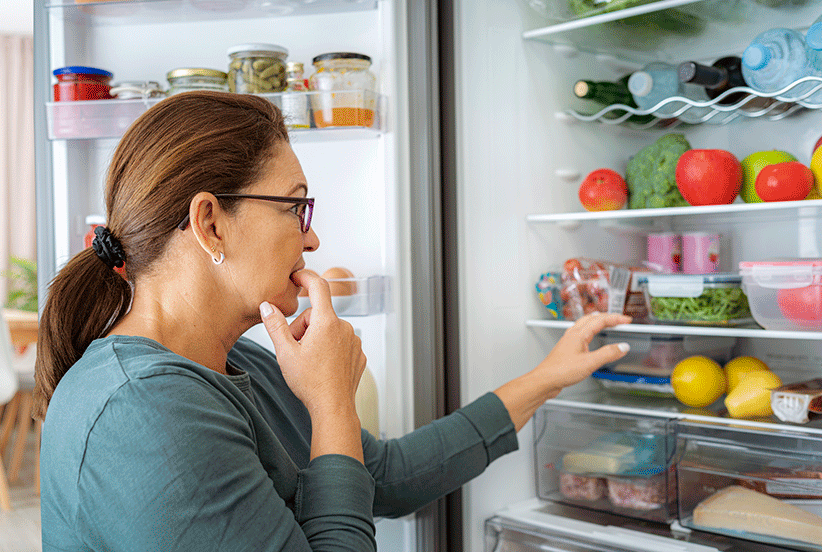
Avoid Emotional Eating by Changing Your Relationship with Food
If you've ever turned to food when feeling stressed, anxious, or even bored, you are not alone. Finding comfort in food is common when your emotions get the best of you.
In many cases, your emotions can become so tied to your eating habits that you automatically reach for comfort food without even thinking about what you're doing, which can sabotage your weight loss efforts.
The good news is that there are things you can do to change your relationship with food and avoid emotional eating.
1. Eat Mindfully.
Eating mindfully means paying attention to what you're eating and noticing how your food affects your body.
When you eat, think about how each bite tastes, how you're enjoying it, and listen to your body's fullness cues. This is a crucial step in changing your relationship with food and is the most important one to get right.
Mindful eating may improve your weight loss journey by helping you distinguish between physical hunger and emotional eating. It shifts the focus of eating to nourish your body rather than to fulfill emotional needs.
Eating slowly and paying attention to the unique textures and wonderful flavors of your food can make your meals more enjoyable and satisfying.
Paying attention to your food makes you feel more in control of your diet and your body.
2. Identify your patterns of emotional eating.
Think about your emotional eating triggers, what you crave, and how you normally handle them.
Understanding your patterns and triggers is crucial to modifying your response to them. Now, plan how to navigate your triggers and make healthier food choices when you’re not hungry. Consider going for a walk, meditating, reaching out to a friend, or enjoying a refreshing glass of water to help manage cravings.
3. Don’t keep problematic foods in the house.
Once you know the triggers that cause you to eat emotionally, you can take steps to redirect yourself. One way to help with this is to keep only healthy food options in the house. Having tempting foods in your fridge or pantry will make it harder to avoid them.
4. Start your day with a balanced breakfast.
A healthy, balanced breakfast can help set you up for mealtime success throughout the day, give you more energy, and help you feel better, both physically and emotionally.
5. Avoid long stretches between meals.
Waiting too long between meals could lead to heightened cravings for unhealthy food or overeating when you eventually sit down for a meal.
If you are going to go more than 4-6 hours between meals, have a healthy snack to avoid this problem. Try raw veggies or a lean protein to hold you over until your next meal. Cucumbers dipped in guacamole, a boiled egg, a handful of nuts, or some cheese cubes are all good suggestions. We don't recommend eating a carb on its own as a snack, even if it's a piece of fruit.
To better understand your hunger patterns, pay attention to your body. If you’re feeling hungry and sufficient time has passed since your last meal, be proactive. Maintaining a consistent meal schedule and having healthy meals prepared and readily available can help you avoid the traps of emotional hunger.
6. Be kind to yourself and move on.
When you eat something you crave, have a small portion and pay attention to see if you are satisfied. Then ask yourself, ‘Do I need more?’
It’s important to be kind to yourself when giving in to a craving. Accept that it happened and keep moving forward on your journey. Doing so can enhance your emotional well-being and prevent emotional eating when faced with future cravings.
Remember to be gentle with yourself and be proud that you are taking steps to make real and lasting changes in your life.
Sources
Information for this article was collected by the health and wellness experts at GOLO using the following sources:
Mayo Clinic
Visit GOLO.com to access all the weight loss tools GOLO has to offer!
1-800-730-GOLO(4656) support@golo.com
GOLO is not intended to diagnose, treat, prevent or cure any illness or disease. This blog provides general information and discussion about health and wellness related subjects. The words and other content provided in this blog, and in any linked materials, are not intended and should not be construed as medical advice. GOLO encourages you to consult a doctor before making any health changes, especially any changes related to a specific diagnosis or condition. All opinions and articles linked to and from this page are those of the individuals concerned and do not necessarily represent those of GOLO, LLC or its employees. No responsibility can be accepted for any action you take or refrain from taking as a result of viewing this page. GOLO will not be liable for any errors, losses, injuries, or damages from the display or use of this information. These terms and conditions are subject to change without notice.
Tagged with: Tips & Tricks
March 14, 2023